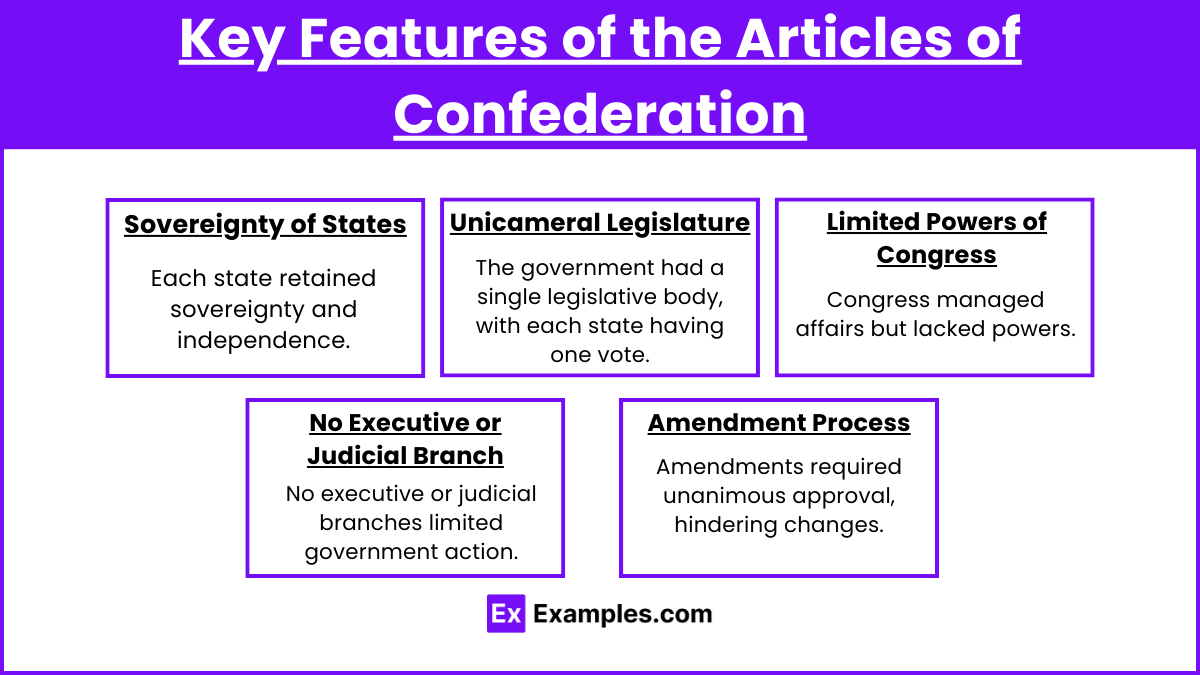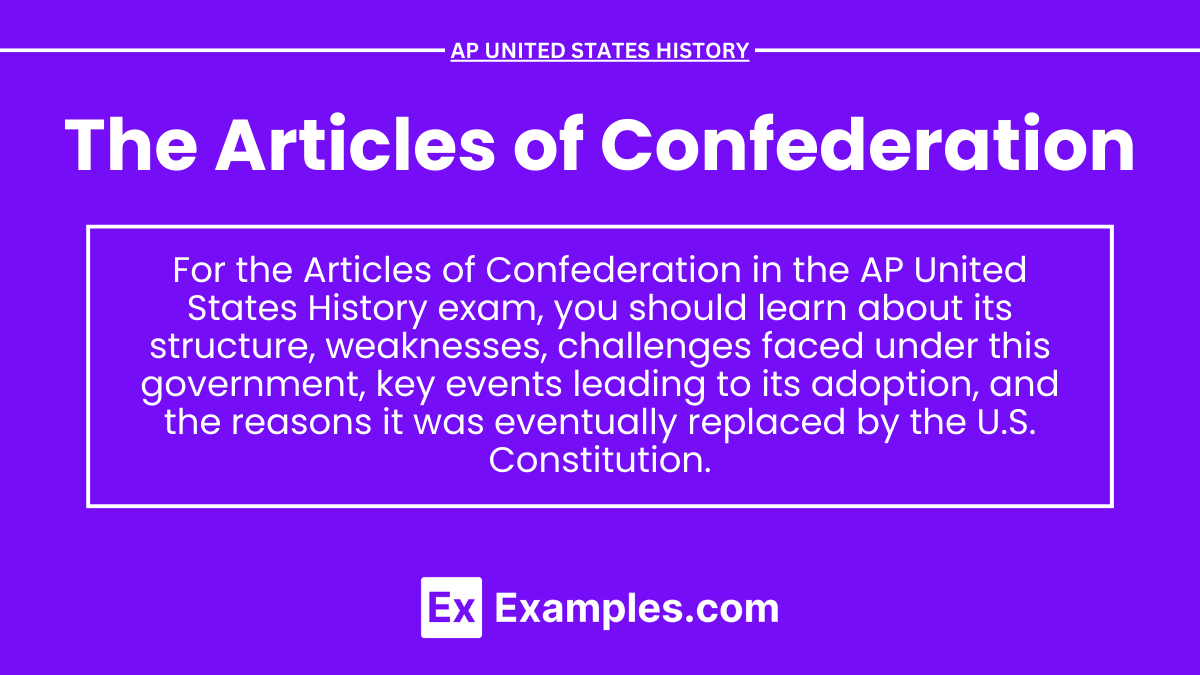In AP United States History, the Articles of Confederation are studied as the first governing document of the United States, drafted during the Revolutionary War and ratified in 1781. This framework established a loose alliance of the states with a weak central government, reflecting the colonies’ fear of tyranny. However, the Articles’ inability to effectively manage national issues like trade, taxation, and defense highlighted the need for a stronger federal government, eventually leading to the Constitutional Convention of 1787.
Learning Objectives
By studying the Articles of Confederation, you will understand the challenges faced by the early United States under a weak central government, recognize the reasons for its eventual replacement by the U.S. Constitution, and explore the impact of this document on the formation of American political structures. You will also gain insight into the balance of power between state and federal authorities and the historical context of post-Revolutionary America.
Key Features of the Articles of Confederation

Sovereignty of States: Each state retained its sovereignty, freedom, and independence, functioning more like individual countries bound by a loose alliance.
Unicameral Legislature: The government consisted of a single legislative body, the Congress of the Confederation, where each state had one vote regardless of size or population.
Limited Powers of Congress: Congress had the authority to conduct foreign affairs, declare war, make peace, manage Indian affairs, coin money, and establish a postal service. However, it lacked the power to tax, regulate commerce, or enforce laws.
No Executive or Judicial Branch: There was no separate executive branch to enforce laws or judicial branch to interpret them, which left the government with limited ability to act decisively.
Amendment Process: Amendments to the Articles required unanimous approval from all thirteen states, making changes difficult to implement.
Strengths of the Articles of Confederation

Northwest Ordinance (1787): Established a process for admitting new states to the Union and provided a framework for the orderly expansion of the United States.
Winning the Revolutionary War: The Articles provided a structure for the new nation to conduct diplomacy and manage the war effort against Britain.
Land Ordinance of 1785: Established a system for surveying and selling western lands, which helped raise revenue for the government and promoted westward expansion.
Peace Treaty with Britain (1783): The Articles facilitated the negotiation and ratification of the Treaty of Paris, which officially ended the Revolutionary War.
Creation of a National Identity: Despite its weaknesses, the Articles helped to unify the states and foster a sense of national identity and purpose.
Weaknesses of the Articles of Confederation

Financial Problems: The national government lacked the power to tax, relying on voluntary contributions from the states, leading to chronic budget deficits and financial instability.
Interstate Disputes: Without the power to regulate interstate commerce, the government could not resolve trade disputes or create a cohesive economic policy.
Foreign Relations Issues: Weaknesses in the central government made it difficult to negotiate effectively with foreign powers or enforce treaties.
Domestic Unrest: Events like Shays’ Rebellion (1786-1787) highlighted the inability of the government to maintain public order and protect property rights.
Inefficient Governance: The requirement for unanimous consent to amend the Articles made it nearly impossible to adapt to changing needs and address emerging problems.
Examples
Shays’ Rebellion (1786-1787): An armed uprising by Massachusetts farmers protesting economic injustices and highlighting the weaknesses of the Articles in maintaining law and order.
Annapolis Convention (1786): A meeting to address trade and navigation issues that ultimately led to the calling of the Constitutional Convention.
Treaty of Paris (1783): The Articles facilitated the negotiation and ratification of the treaty, ending the Revolutionary War and recognizing American independence.
Northwest Ordinance (1787): One of the major achievements under the Articles, establishing a system for admitting new states and governing the Northwest Territory.
Land Ordinance of 1785: Created a standardized system for surveying land and selling it to settlers, which helped manage westward expansion.
Multiple-Choice Questions (MCQs)
1. What was a major weakness of the Articles of Confederation?
A. The lack of a national legislature
B. The inability to conduct foreign affairs
C. The inability to tax and regulate commerce
D. The presence of a strong executive branch
Answer: C. The inability to tax and regulate commerce
Explanation: One of the significant weaknesses of the Articles of Confederation was that the national government lacked the power to tax and regulate interstate and foreign commerce, leading to financial problems and trade disputes.
2. Which ordinance established a process for admitting new states to the Union under the Articles of Confederation?
A. Land Ordinance of 1785
B. Northwest Ordinance of 1787
C. Missouri Compromise
D. Homestead Act
Answer: B. Northwest Ordinance of 1787
Explanation: The Northwest Ordinance of 1787 provided a method for admitting new states to the Union from the Northwest Territory and established guidelines for governance and rights in these territories.
3. What event highlighted the weaknesses of the Articles of Confederation and led to the calling of the Constitutional Convention?
A. The Battle of Bunker Hill
B. The signing of the Treaty of Paris
C. Shays’ Rebellion
D. The Louisiana Purchase
Answer: C. Shays’ Rebellion
Explanation: Shays’ Rebellion, an armed uprising by farmers in Massachusetts, underscored the inability of the government under the Articles of Confederation to maintain order and prompted calls for a stronger central government, leading to the Constitutional Convention.


